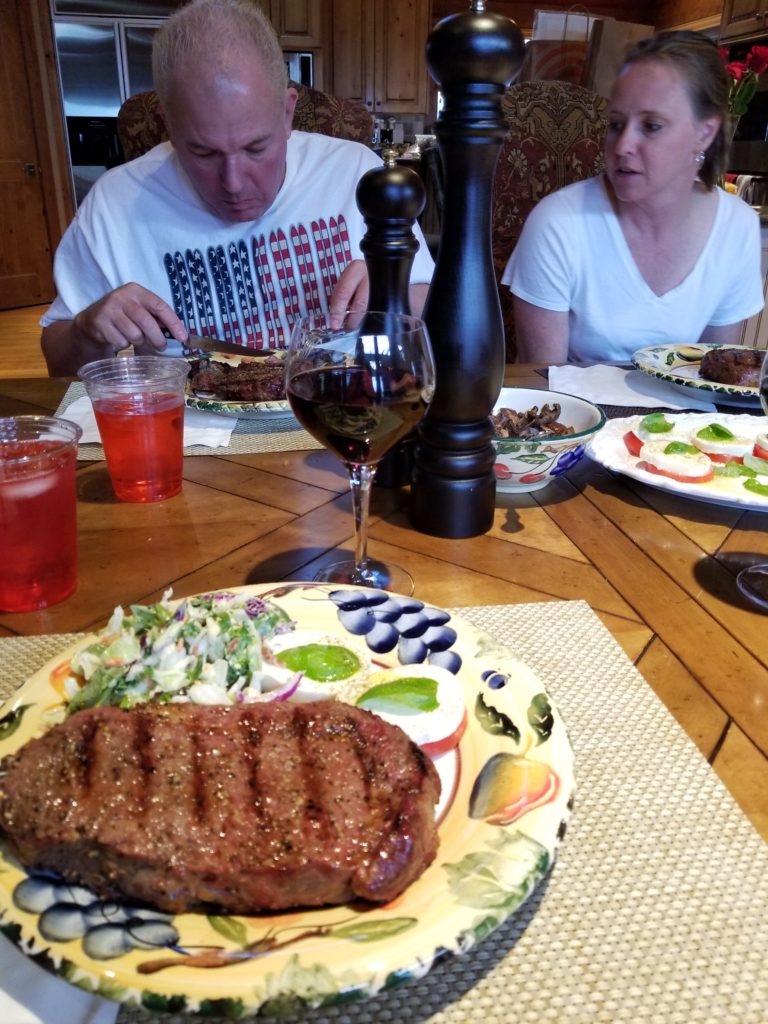Here you will learn about the best Wine and Food pairings and the basics of matching foods with different wines. So that you know what to look at in recipes to be able to pair these for the best taste together. You need to create a true balance between the wine and the food you prepare with it. The wine brings out the taste in foods and vice versa. A great wine and food pairing creates a balance between the components of a dish and the characteristics of a wine. Pairing foods with wines can be tough but the basics are pretty simple.
Here Are Some Great Wine & Food Pairing Tips
First of all the following methods will guide you to understanding the best ways to make your pairings. They have been tested over time and proven to be reliable. Try them for yourself and as you do, you will be able to experiment in your own way. Learn about different wines and then go from there with your pairings on your own. Wine and food pairing!
- So wine should have more acidicy than the food.
- Also the wine needs to be sweeter than the food.
- And wine should have the same flavor intensity as the food.
- The Red wines pair best with red meats and bolder flavors.
- White wines pair best with white meats like chicken or fish for example.
- Bitter red wines are best with fat.
- You should match the wine with the sauce instead of the meat.
- More often White, Sparkling and Rosé wines create contrasting flavors with foods.
- Most of the time Red wines will create congruent pairings.
Congruent Pairings vs Contrasting Pairings
A pairing in contrast creates balance by contrasting tastes and flavors.
Therefore a congruent pairing creates balance by amplifying shared flavors.
Identify The Basic Tastes
There are over 20 different tastes found in food. But you only need to focus on 6 tastes when pairing food and wine: Salt, Acid, Sweet, Bitter, Fat and Spice.

Basic Tastes in Wine
Mostly wine lacks the 3 tastes of fatness, spiciness and saltiness but does contain acidity, sweetness and bitterness in varying degrees. Therefore you can group wines into 3 different categories:
- Red wines are more bitter.
- White, rosé and sparkling wines are more acidity.
- Sweet wines are just sweeter to a degree.
The Taste Components of Food
You need to break a food dish down to the basic outstanding tastes. Take a can of creamed corn. It is sweet and fatty. Barbecue has fats, salt and a little sweet and spiciness, along with a little acidity. Also take baked macaroni, fat and salt are the basics.
How is the Intensity?
FOOD: Is it rich tasting or real light tasting? A salad may seem lighter, but the dressing could be high in acidity. If the intensity of the dish isn’t obvious at first, just focus on the power of each taste component (acidity, fat, sweet, etc).
WINE: Is the wine light or bold? Here are a few examples:
- Sauvignon Blanc is light-bodied, but it has higher acidity
- Chardonnay has more body, but it’s usually not too acidic
- Pinot Noir is lighter bodied (for a red wine) and it doesn’t have too much tannin (bitterness).
- Cabernet Sauvignon is more full-bodied and has high tannin (more bitterness)
Find Pairings That are Contrasting or Congruent
So you now have the basic tastes of your dishes. You can start trying new pairings. One example is the baked macaroni dish. Several pairings come to mind:
COMPLEMENTARY PAIRING: A white wine with high acidity will complement the fat in the macaroni. So, for example, a mac and cheese recipe with a creamy sauce matched with zesty white wine such as Pinot Grigio, Assyrtiko or Sauvignon Blanc would create a Complementary Pairing.
CONGRUENT PAIRING: A white wine with creaminess will add to the creaminess in the dish. So a mac and cheese recipe with a creamy sauce matched with a creamy white wine such as Viognier or Chardonnay would create a Congruent Pairing.
Get Creative
Once you create balance with the major taste components in both the wine and the dish, you can get creative by pairing the more subtle flavors. Here are some examples using variants of mac and cheese:
BOLD RED WINE: The idea behind this pairing is that the high bitterness (tannin) will be balanced out by the salt and fat in the macaroni. This balancing will leave you with the remaining subtle flavors to pair with in the cheese and wine.
SWEET WHITE WINE: The idea behind this pairing is to bring out the sweet and salty flavors with the pairing. So a mac and cheese with ham would match well with a zesty white wine with some sweetness like Riesling. The acidity would create a Complementary Pairing to the fat and the sweetness would act as a Congruent Pairing to the ham.
So take these tips about pairings and try them for yourself. And experiment with them on your own. I’m sure you will truly enjoy the different tastes you create. These are just the basics about pairing but a great place to start.
Check back often for more tips on pairing wine and food. Sign up below for my newsletter and I will let you know about new articles when I write them and special deals on my site. Thank You.



